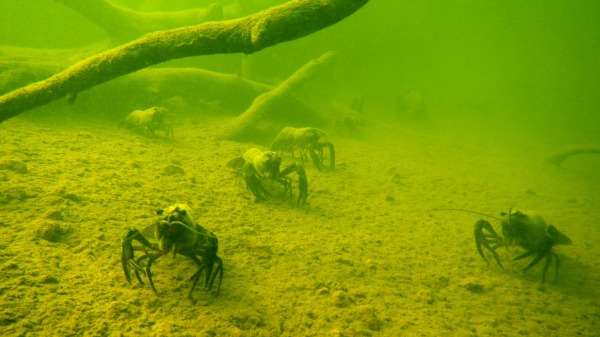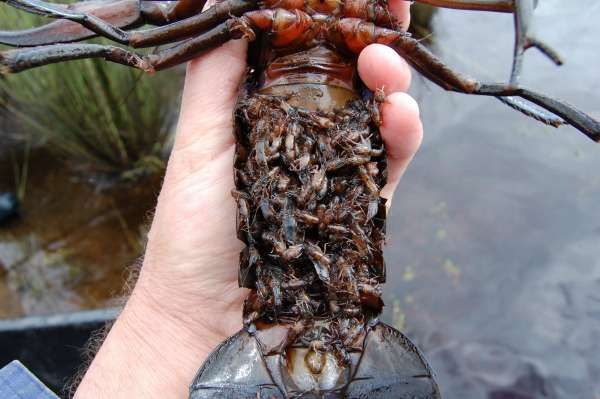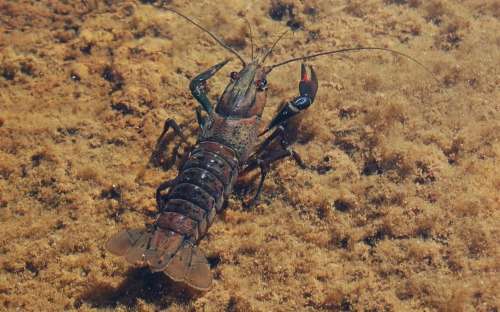Where to find WA's most fertile marron

Next time you're hoping to snare a marron in the South West, spare a thought for the fertility of the animals in the murky water below.
A study into the reproductive traits of smooth marron (Cherax cainii) has revealed Harvey Dam and the Blackwood River are home to the female marron with the most eggs, or highest "fecundity", in the state.
The Preston River and the Moore River are also home to fecund marron, while the crayfish with the fewest eggs are found in Collie River.
It is the first time researchers have been able to understand the differences in fecundity and the size marron mature across several populations, lead author and Murdoch University fish ecologist Stephen Beatty says.
But, he says, trying to tease out the reason for those differences is a contentious issue.
"It's usually all about the amount of resources that an animal can allocate to reproduction, and it's a trade-off with growth," Dr Beatty says.
"There's all sorts of different factors that can change the resources available to an animal, things like productivity in the water…but also things like the amount of complex habitat.
"We've found marron really prefer lots and lots of complex habitat, particularly things like large woody debris, so things falling from trees, and also rocky habitat."

Smooth marron are the third largest freshwater crayfish in the world and are targeted by recreational fishers in a short summer season from January 8 to February 5 each year.
Unlike yabbies, which were introduced from the eastern states in the 1930s, marron are endemic to the South West.
Dr Beatty says about 11,000 licenced fishers catch roughly 17,000 marron every year in WA.

Understanding the crayfish's reproductive traits is crucial to managing the species, he says.
"The fishery is going more [the way] of a boutique fishery rather than people going out to catch lots and lots," Dr Beatty says.
"It's more of an iconic, family-orientated [experience]—catch a few really nice, big, large marron but just make sure the fishery is sustainable.
"I really support having it as something that's really special that we make sure is around in the future."
Dr Beatty says fertility is just one factor affecting marron numbers in any given waterway and the best way to make sure your catch is sustainable is to stick to the bag limit, never keep undersized marron and release any females with eggs attached.
Provided by Science Network WA
This article first appeared on ScienceNetwork Western Australia a science news website based at Scitech.




















